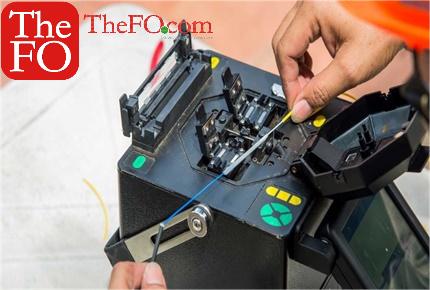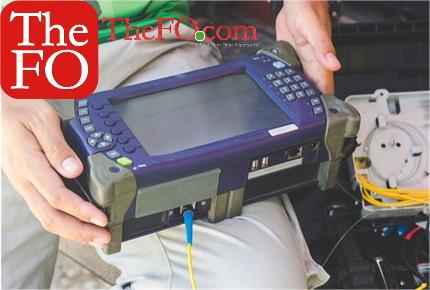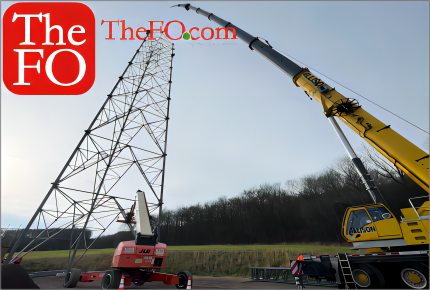-
When to use an OTDR or LTS
Categories: OTDRThis note explores the strengths & weaknesses of OTDRs and loss test sets, since they are often used in similar situations. A loss test set may be a light source and power meter pair, or an integrated OLTS.
-
Maintaining Your Fiber Optic Fusion Splicer
Categories: Fusion SplicingEffective fiber splicing is a direct result of a well-maintained and clean fusion splicer. While you may think that they are one in the same, they each have their own methodology to ensure the best performance over the lifespan of the splicer. A splicer that is well-maintained AND clean will help ensure proper connections and prolong the life of your fusion splicer. The fact is 80% of the maintenance issues we see at UCL Swift are the direct result of improper cleaning. To maintain your splicer and ensure that it is splicing properly and accurately
-
How far can a VFL go?
Categories: OthersThere is much lively debate about what useful distance range to expect when using a visual fault locator (VFL) for testing single mode fiber installations. In this article I will provide my perspective and with it, a methodical analysis.
-
How to Perform Bi-Direction Testing with an OTDR
Categories: OTDRInstallers and administrators of today’s fiber optic networks have access to different fiber infrastructure testers that provide the ability to measure optical loss as well as OTDR analysis. Debates continue to take place as to what testers do this better than others and what features are ‘must haves’. Whether short dead zones, fast signal analysis, ease of use, claimed accuracies or any other measurement parameter … if you are looking to make the best purchasing decision, it can be a difficult decision. A bad decision can mean much more than just losing out on the investment in the tester. It could mean downtime (or loss) of the corporate (or customers) network and possibly thousands of dollars of lost revenue, productivity or legal costs.
-
What Is a Fiber Optic Splicer and How to Become One
Categories: Fusion SplicingA Fiber Optical Splicer utilizes modern telecom technology to splice together fiber optical cable. Combing science and telecom together, Fiber Splicers splice thin strands of flexible glass that allow the transmission of light from one location to the next.
After the splicing of optical cable occurs, these technicians install and trouble shoot the fiber optic system for residential homes (fiber to the home) and commercial businesses.
-
Why use launch cable in otdr?
Categories: OTDROTDR launch box, according to its function and working principle, has a lot of other names, like dead zone box, pulse suppressor, fiber ring, fiber optic launch cable, etc.
Optical time domain reflectometer (OTDR) is a necessary fiber optic testing tool which use light back-scattering technologies to analyze the optical fiber performance. It can test the light loss and locate the breaks, splices and connectors in fiber optic network. However, OTDR has "dead zone" which can affect the testing result if proper measure is not taken. To overcome the limitation of OTDR dead zone, OTDR launch box is being used. How can OTDR launch box minimize the effect of OTDR dead zone during fiber optic testing? The following explains the detail.
-
Relationship Between Dynamic Range & Dead Zones
Categories: OTDRFiber is going deeper everywhere as massive rollouts are laying the ground for 5G and IoT in today’s transforming telecom landscape. The promise of tomorrow’s technologies relies on an extremely reliable fiber foundation, whether in data centers, in the field or at customer premises. Verifying the integrity of the fiber optic cables with the right OTDR testing methods has never been more vital to be able to quickly identify and locate faults.
-
‘Ghost’ events in Optical Time Domain Reflectometer (OTDR)
Categories: OTDRSometimes an anomaly called ‘ghost’ event appears in an OTDR trace that can be confused with a real reflective event. This application note explains how to distinguish an OTDR ‘ghost’ from a real event and lists techniques to eliminate ghosts from OTDR traces.
-
Guidelines On What Loss To Expect When Testing Fiber Optic Cables
Categories: OthersTo be able to judge whether a fiber optic cable plant is good, one does a insertion loss test with a light source and power meter and compares that to an estimate of what is a reasonable loss for that cable plant. The estimate, called a "loss budget" is calculated using typical component losses for each part of the cable plant - the fiber, splices and/or connectors. If the measured loss exceed the calculated loss by a significant amount (remembering the inherent uncertainty in all measurements), the system should be tested segment-by-segment to determine the cause of high loss.
-









